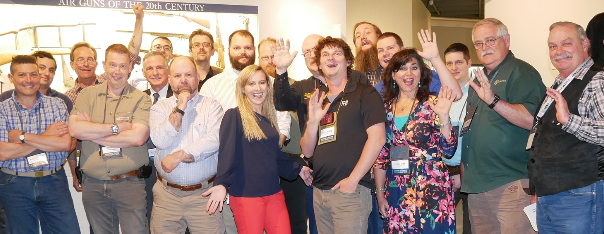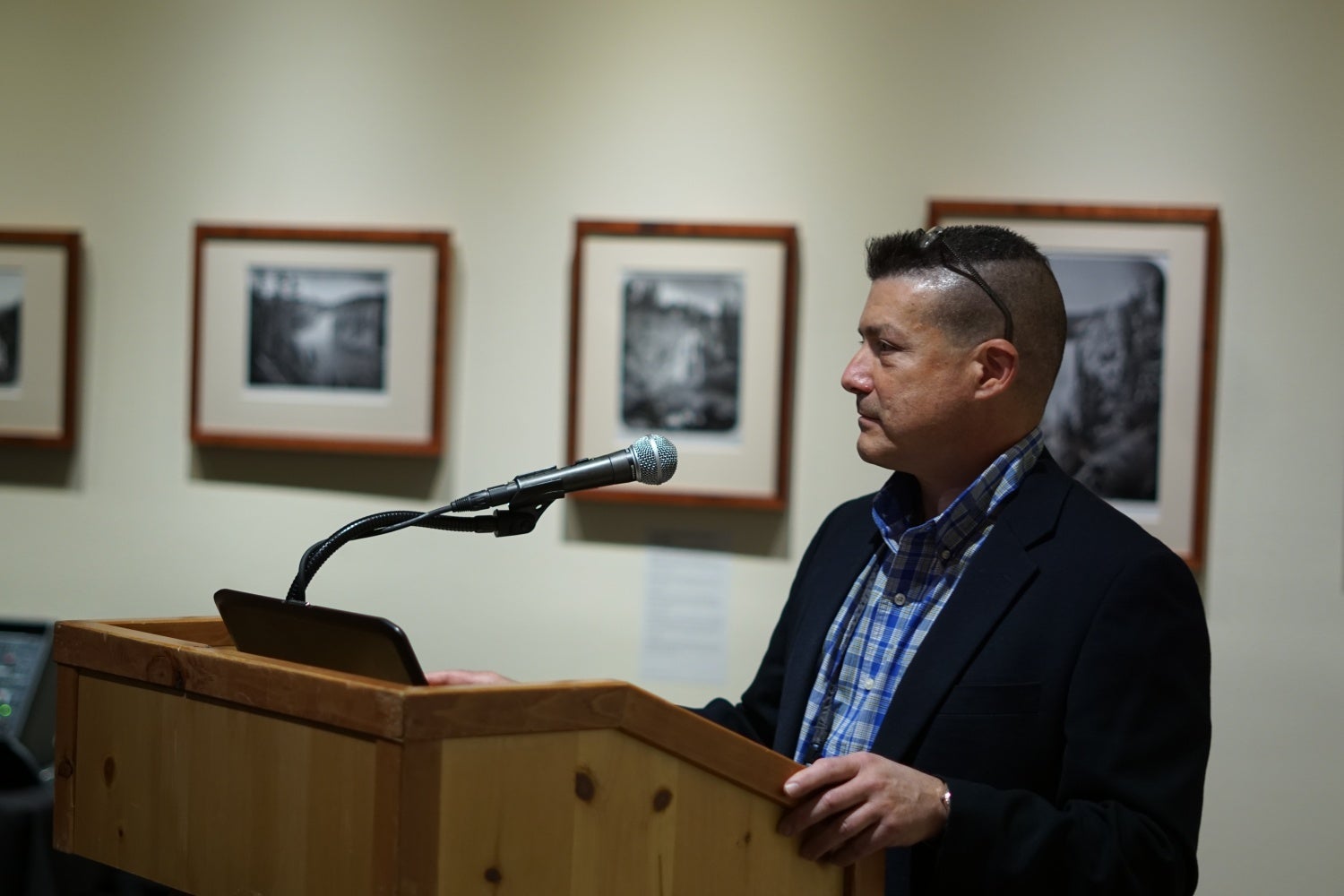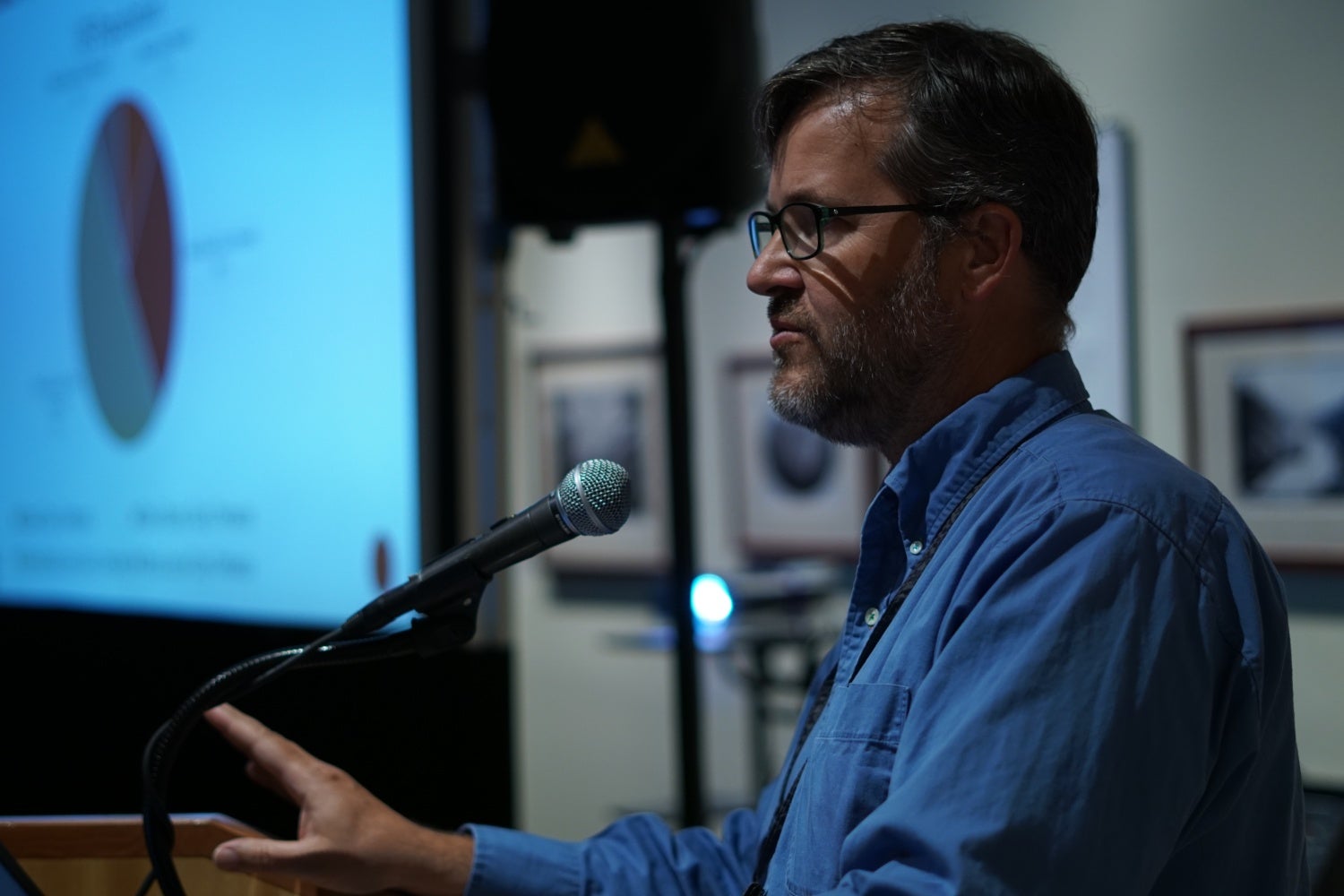The final day of the symposium continued with more conversations about the different aspects of maintaining firearms collections among curators. More important than some of the actual presentations and talks were the conversations that followed between the people present. They were able to exchange ideas and experiences in real time during the course of the discussion.
Conflict of Interest and Personal Collecting
Erik Goldstein, Colonial Williamsburg
Erik brought up his experience of the importance of collecting what you curate. He wants to make a point of it because sometimes this is discouraged in the museum world. The curator from the Dutch National Military Museum made the point that it is actually explicitly not allowed while working for their museum, he himself had to give up his First World War collection of uniforms before he could start work there. Mostly this is out of a fear of conflict of interest between a curator and a collection, a curator possibly taking items out of a museum collection for their own personal gain. Erik’s point was that for a good curator to really understand what they have and how to possibly display it, the importance of having a personal stake in it is very necessary.
Effective Web Access for Collections
Ben Nicholson, School of the Art Institute of Chicago
Ben is an extremely avid firearms museum aficionado and has amassed an entire website of his travels and information about every museum he has visited in the United States. Through this experience, he was able to put together a comprehensive set of slides detailing what he found useful and what he found was lacking. One topic that his talk brought up was the matter of social media and the museum presence online. He compared different websites and went through why some were better than others when it came to the museum visitor experience. This sentiment was echoed throughout the rest of the curators because social media and an online presence are something that many museums are having a tough time to catch up to.
An important point that he brought up was the fact of cataloging and searching for items in any given collection through the web. This is a subject that still is difficult for many curators and collections today because they don’t have the time to catalog every item in their collections to the point of allowing it to be searchable for a researcher. Some only have a small number of firearms in their database while others might have most of the collection but not any photographs of them for example. Others have run into issues wherein one national park in Massachusets decided to use Flickr as a social media database. Suddenly the parent organization decided that no entity within it could use Flickr as a social media platform. This made the process of getting the database online completely redundant.
Something that I personally brought up is the fact that researching small arms in person at physical locations has always been very difficult as an individual researcher. Just getting access to a reference collection can be hard in of itself (good luck with most U.S. Government reference collections), but even more important than that is trying to find exactly what you want to research. Most of the cataloging systems are very hard to work with online and even when they do work, there is no consistent reference style like a Dewey Decimal system to aid in looking for various items.
Taking the Gun Out of the Story
Dave Kennedy, US Marshals Museum
David Kennedy talked at length about the relationship between firearms in museums and how the historical story is trying to be told through the various displays in the building. The point that he was making was that the standard format of laying a museum out for “Gun Guys” doesn’t always work. The NRA Museum is a perfect example of this that works very well because it is the NRA and folks are attracted to that. But in his talk, there has to be a way to incorporate a majority of the people that are visiting a firearms museum or a museum with a large number of firearms in it that aren’t “Gun Guys” per say. An accompanying family for example that might have very little interest in firearms. Some curators mentioned this phenomenon as the “Gun-quarium” where you simply have rows upon rows of firearms behind glass walls, simulating an aquarium full of marine animals behind glass.
The symposium ended on a very high note by planning next year’s symposium but more importantly, there was a very good announcement that we’ll cover in a future TFB post.
Although the entire event was very curator and museum background orientated, I would absolutely recommend any small arms historian or researcher to attend it in the future. If only for the one reason to be able to make in-person acquaintances with the curators and gatekeepers of these reference collections that hold so value in creating content and researching historical small arms.
 Your Privacy Choices
Your Privacy Choices



